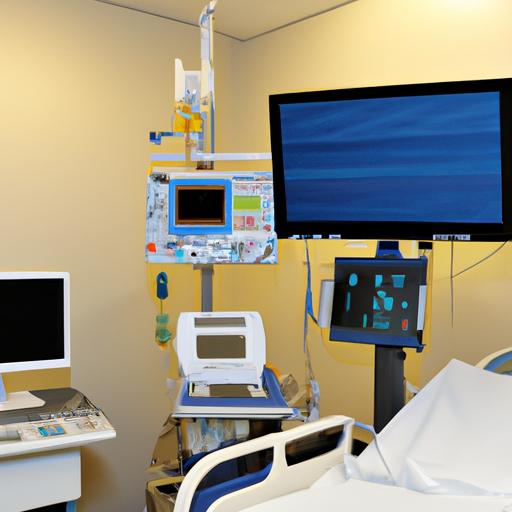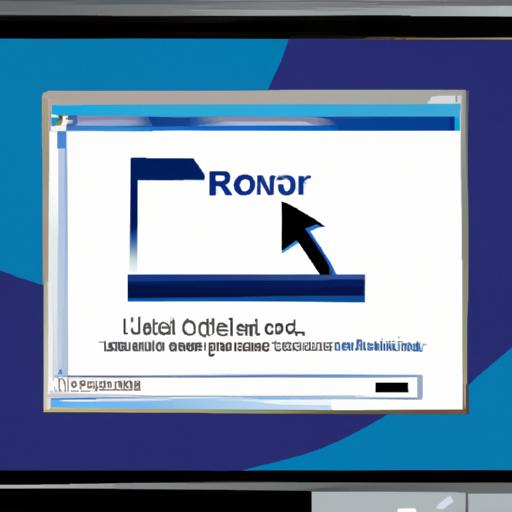In the fast-paced and ever-evolving world of healthcare, hospitals face numerous challenges in managing their valuable assets effectively. From medical equipment to supplies, ensuring proper tracking, maintenance, and utilization of these assets is crucial for delivering high-quality patient care. This is where asset management software for hospitals plays a pivotal role.
A. Importance of Asset Management Software in Hospitals
When it comes to hospitals, efficient asset management is not just about cost savings; it directly impacts patient outcomes and safety. Imagine a scenario where critical medical equipment fails during a life-saving procedure or essential supplies run out unexpectedly. Such situations can lead to delays in treatment, compromised patient safety, and even life-threatening consequences. Asset management software provides hospitals with the tools to avoid such scenarios by enabling real-time tracking, maintenance, and optimization of their assets.
B. Definition of Asset Management Software for Hospitals
Asset management software for hospitals is a comprehensive digital solution designed to streamline the management of healthcare assets. It encompasses a range of features that enable hospitals to track, monitor, and maintain their assets efficiently. From inventory management to preventive maintenance scheduling, the software provides a centralized platform for hospitals to effectively manage their assets throughout their lifecycle.
C. Benefits of Implementing Asset Management Software in Hospitals
Implementing asset management software in hospitals brings forth a multitude of benefits. Firstly, it enhances operational efficiency by providing real-time visibility into the location and status of assets, reducing time wasted searching for equipment or supplies. This streamlines workflows and ensures that staff can focus on delivering quality care rather than hunting for resources.
Moreover, asset management software helps hospitals optimize their inventory levels. By accurately tracking usage and expiration dates, it prevents stockouts and minimizes wastage, leading to significant cost savings. Additionally, the software enables preventive maintenance scheduling, ensuring that equipment is regularly serviced and reducing the risk of breakdowns during critical procedures.
In conclusion, asset management software for hospitals is a game-changer in optimizing operations and maximizing efficiency. By leveraging this technology, hospitals can enhance patient safety, reduce costs, and improve overall quality of care. In the following sections, we will delve deeper into the key features, factors to consider when choosing the software, best practices for implementation, and success stories of hospitals that have benefited from asset management software. So, let’s explore the world of asset management software designed specifically for hospitals and unlock its potential for your healthcare institution.
Key Features of Asset Management Software for Hospitals
In the fast-paced and dynamic environment of hospitals, effective asset management is crucial for ensuring smooth operations and delivering quality patient care. Asset management software designed specifically for hospitals offers a wide range of features that empower healthcare institutions to optimize their asset management processes. Let’s explore some of the key features that make this software invaluable:
A. Real-time Tracking and Monitoring of Hospital Assets
Asset management software enables hospitals to track and monitor their assets in real-time. Through the use of advanced technologies such as GPS, RFID, or barcode scanning, hospitals can easily locate and keep tabs on their equipment, supplies, and other resources. This feature eliminates the need for manual searches and saves valuable time, ensuring that assets are readily available when needed.
B. Inventory Management and Optimization
Efficient inventory management is vital for hospitals to maintain adequate stock levels while minimizing waste and cost. Asset management software provides hospitals with the tools to effectively manage their inventory. It allows for accurate tracking of stock levels, expiration dates, and usage patterns. By analyzing this data, hospitals can optimize their inventory, preventing stockouts and reducing unnecessary stockpiling.
C. Preventive Maintenance Scheduling and Tracking
Regular maintenance is crucial for ensuring the reliability and longevity of hospital assets. Asset management software simplifies the process of scheduling and tracking preventive maintenance tasks. It sends automated reminders for maintenance activities, tracks service history, and generates reports on asset performance. This proactive approach minimizes equipment breakdowns, reduces downtime, and extends the lifespan of assets.
D. Integration with Hospital Information Systems
Seamless integration with existing hospital information systems is a vital feature of asset management software. It allows for easy data exchange and synchronization, eliminating the need for manual data entry and reducing the risk of errors. Integration with electronic medical records, procurement systems, and other hospital software enhances efficiency and streamlines workflows.
E. Barcode or RFID Asset Tagging
Asset tagging using barcodes or RFID (Radio Frequency Identification) technology is a fundamental feature of asset management software. Each asset is assigned a unique identifier that can be easily scanned or read, providing instant access to asset information. This feature simplifies asset tracking, reduces human error, and enables quick and accurate data capture.
F. Reporting and Analytics Capabilities
Asset management software provides robust reporting and analytics capabilities, offering hospitals valuable insights into their asset utilization, maintenance history, and cost analysis. Customizable reports and analytics dashboards enable data-driven decision-making, helping hospitals identify areas for improvement, optimize resource allocation, and streamline operations.
In the next section, we will discuss the factors that hospitals should consider when choosing asset management software tailored to their specific needs. Let’s dive deeper and explore the essential aspects that will guide you in selecting the right software solution for your hospital.
Factors to Consider when Choosing Asset Management Software for Hospitals
When selecting the right asset management software for your hospital, several crucial factors should be taken into account. By carefully evaluating these factors, you can ensure that the software aligns with your hospital’s specific needs and seamlessly integrates into your existing infrastructure.
A. Scalability and Customization Options
As your hospital grows and evolves, it is vital to choose asset management software that can scale alongside your expanding operations. Look for software solutions that offer scalability and flexibility in terms of managing a growing number of assets and accommodating future requirements. Additionally, customization options are essential to tailor the software to your hospital’s unique workflows and processes.
B. User-Friendly Interface and Ease of Use
To maximize the benefits of asset management software, it is crucial that the interface is intuitive and user-friendly. The software should be easy to navigate, requiring minimal training for staff members to use effectively. A well-designed user interface ensures that your team can quickly adapt to the software, reducing the learning curve and improving overall efficiency.
C. Integration Compatibility with Existing Systems
Your hospital likely already utilizes various systems and software for different functions. Therefore, it is crucial to select asset management software that can seamlessly integrate with your existing infrastructure. This ensures smooth data transfer between systems and avoids the need for manual data entry or duplicate records. Look for software that offers compatibility with hospital information systems, electronic health records, and other critical applications.
D. Data Security and Compliance
Hospitals handle sensitive patient information and must comply with stringent data security and privacy regulations. When choosing asset management software, prioritize solutions that prioritize data security and compliance. Look for features such as user access controls, encryption protocols, and regular software updates to ensure the safety of your hospital’s data and compliance with industry regulations.
E. Cost and Return on Investment
While considering asset management software options, it is essential to evaluate the overall cost and potential return on investment (ROI). Compare the pricing structures of different software providers, taking into account any additional costs such as implementation, training, and ongoing support. Additionally, consider the potential cost savings and efficiency improvements that the software can bring to your hospital. A software solution that offers a favorable balance between cost and ROI is the ideal choice.
By considering these factors and thoroughly evaluating asset management software options, you can choose a solution that best suits your hospital’s unique requirements. In the next section, we will explore best practices for implementing asset management software in hospitals to ensure a successful integration and utilization of the software.
Best Practices for Implementing Asset Management Software in Hospitals
Implementing asset management software in hospitals requires careful planning and execution to ensure its successful adoption and utilization. By following best practices, hospitals can maximize the benefits derived from the software and optimize their asset management processes. Here are some key practices to consider:
A. Conducting a Comprehensive Asset Inventory
Before implementing asset management software, it is essential to conduct a thorough inventory of all hospital assets. This includes identifying and cataloging equipment, supplies, and other resources. By creating a comprehensive asset database, hospitals can ensure that all assets are accounted for and properly tracked within the software system.
B. Training and Educating Hospital Staff
Proper training and education are crucial for the successful implementation of asset management software. Hospital staff should be provided with comprehensive training on how to use the software effectively. This includes understanding the functionalities, data entry processes, and reporting capabilities of the software. By ensuring that all staff members are proficient in using the software, hospitals can optimize asset management processes and minimize errors.
C. Establishing Standard Operating Procedures (SOPs)
To ensure consistency and uniformity in asset management practices, hospitals should establish standard operating procedures (SOPs). These SOPs should outline the processes and guidelines for asset tracking, maintenance, and utilization using the software. By having clear and well-defined procedures, hospitals can reduce confusion, enhance efficiency, and promote compliance with asset management protocols.
D. Regularly Updating and Maintaining Asset Data
Accurate and up-to-date data is crucial for effective asset management. It is important to regularly update and maintain asset data within the software system. This includes recording asset movements, maintenance activities, and any changes in asset status. By ensuring the accuracy and completeness of asset data, hospitals can make informed decisions regarding asset utilization, maintenance, and replacement.
E. Conducting Audits and Performance Evaluations
Regular audits and performance evaluations are essential to assess the effectiveness of asset management practices and the software itself. Hospitals should conduct periodic audits to verify the accuracy of asset data and identify any discrepancies or issues. Performance evaluations can help hospitals assess whether the software is meeting their asset management goals and identify areas for improvement.
Incorporating these best practices into the implementation of asset management software can significantly enhance the efficiency and effectiveness of asset management processes in hospitals. By adopting a proactive approach and following these guidelines, hospitals can optimize their asset utilization, reduce costs, and improve the overall quality of patient care.
Case Studies: Success Stories of Hospitals Implementing Asset Management Software
In this section, we will explore real-world examples of hospitals that have successfully implemented asset management software and reaped numerous benefits in terms of streamlined operations, cost savings, and improved patient care.
A. Hospital A: Streamlining Asset Management Processes and Reducing Costs
Hospital A, a large medical facility with multiple departments and a vast inventory of medical equipment, faced challenges in tracking and maintaining their assets effectively. With the implementation of asset management software, they experienced a significant transformation in their operations. The software provided real-time visibility into the location and status of assets, eliminating time wasted searching for equipment. This streamlined their workflows, leading to improved efficiency and reduced costs.
Furthermore, the software enabled Hospital A to optimize their inventory levels. By accurately tracking usage patterns and expiration dates, they minimized the risk of stockouts and reduced wastage. This not only saved costs but also ensured that critical supplies were always available when needed, enhancing patient care and safety.
B. Hospital B: Enhancing Patient Safety and Improving Equipment Utilization
Hospital B recognized the importance of patient safety and the impact of efficient asset management on healthcare outcomes. By implementing asset management software, they were able to enhance patient safety significantly. The software enabled them to track maintenance schedules and perform regular inspections, ensuring that medical equipment was in optimal working condition. This reduced the risk of equipment failure during critical procedures, contributing to improved patient safety and outcomes.
Moreover, Hospital B witnessed a substantial improvement in equipment utilization. The software provided insights into usage patterns, allowing them to identify underutilized assets and redistribute them effectively. By maximizing equipment utilization, they were able to optimize resource allocation, reduce unnecessary purchases, and save costs.
C. Hospital C: Optimizing Inventory Levels and Reducing Stockouts
Hospital C, a medium-sized healthcare facility, struggled with inventory management and frequent stockouts. Implementing asset management software revolutionized their approach to inventory control. The software provided real-time visibility into stock levels, ensuring accurate tracking of supplies and preventing stockouts. By optimizing their inventory levels, Hospital C minimized wastage, reduced inventory carrying costs, and improved their overall financial performance.
Additionally, the software enabled Hospital C to streamline their procurement processes. With automated alerts for low stock levels and expiration dates, they could proactively replenish supplies and avoid emergency purchases, resulting in further cost savings.
In conclusion, these case studies highlight the transformative impact of asset management software on hospitals. Through streamlined asset management processes, reduced costs, enhanced patient safety, and optimized inventory levels, hospitals can achieve significant improvements in their operations and patient care. The next section will provide insights into the best practices for implementing asset management software in hospitals, ensuring successful adoption and maximum benefits.
Conclusion
Implementing asset management software for hospitals is a strategic decision that can revolutionize the way healthcare institutions manage their valuable assets. By leveraging the power of technology, hospitals can streamline operations, maximize efficiency, and ultimately deliver better patient care.
Throughout this article, we have explored the importance of asset management software in hospitals and its definition. We have also highlighted the numerous benefits that come with implementing such software. From real-time tracking and monitoring of assets to inventory management and preventive maintenance scheduling, the software provides hospitals with the tools they need to optimize their asset management processes.
When choosing asset management software for hospitals, it is crucial to consider factors such as scalability, integration compatibility, and data security. By selecting a software solution that aligns with the specific needs and requirements of the hospital, healthcare institutions can ensure a seamless implementation and long-term success.
To successfully implement asset management software, hospitals should follow best practices such as conducting a comprehensive asset inventory, training and educating staff, establishing standard operating procedures, and regularly updating asset data. These practices will contribute to the smooth functioning of the software and maximize its benefits.
Real-world success stories of hospitals that have implemented asset management software showcase the tangible impact it can have on operations. From streamlining processes and reducing costs to enhancing patient safety and improving equipment utilization, these hospitals have experienced transformative results.
In conclusion, asset management software for hospitals is a powerful tool that empowers healthcare institutions to take control of their assets and optimize their operations. By embracing this technology, hospitals can achieve greater efficiency, cost savings, and ultimately, provide better care to their patients. So, take the leap and unlock the potential of asset management software for your hospital today.



